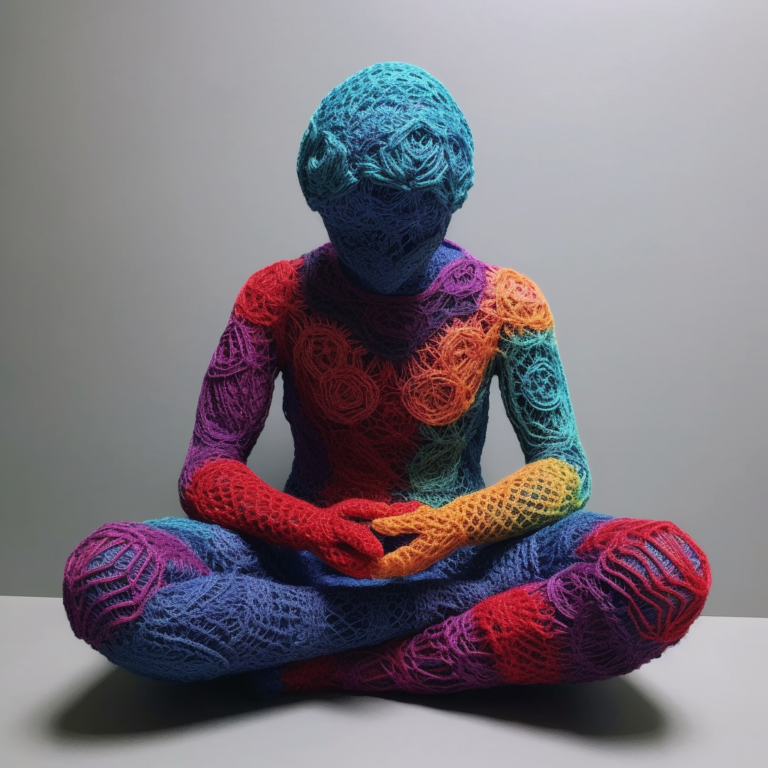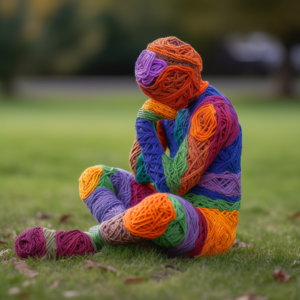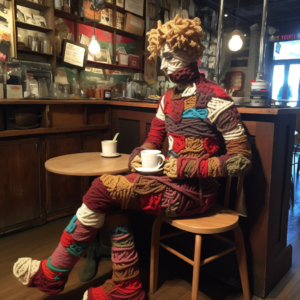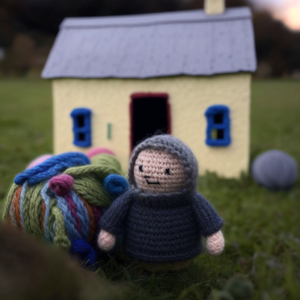“Empowering late-diagnosed autistic adults to conquer anxiety and thrive.”
Autistic anxiety is a common experience for many late-diagnosed autistic adults. Coping with stressful situations can be challenging, but there are techniques that can help alleviate anxiety and improve overall well-being. In this article, we will explore some of these techniques and how they can be applied in daily life.
Mindfulness Techniques for Autistic Anxiety in Late-Diagnosed Adults
As an autistic adult, I know firsthand how overwhelming and stressful certain situations can be. Whether it’s a crowded room, a loud noise, or a change in routine, these triggers can cause intense anxiety and make it difficult to function. But over the years, I’ve learned some mindfulness techniques that have helped me cope with my autistic anxiety and navigate these situations with more ease.
Deep Breathing
One of the most effective techniques I’ve found is deep breathing. When I feel myself getting anxious, I take a few deep breaths and focus on the sensation of the air moving in and out of my body. This helps me slow down my racing thoughts and calm my nervous system. I also find it helpful to count my breaths, which gives me something to focus on and helps me stay present in the moment.
Visualization
Another technique that has been helpful for me is visualization. When I’m feeling anxious, I close my eyes and imagine myself in a peaceful, calming environment. This could be a beach, a forest, or any other place that makes me feel relaxed and at ease. I focus on the sights, sounds, and sensations of this environment, and allow myself to fully immerse in the experience. This helps me shift my focus away from my anxiety and into a more positive, calming state of mind.
Mindfulness
Mindfulness meditation is another technique that has been shown to be effective for reducing anxiety in autistic adults. This involves sitting quietly and focusing on your breath, while allowing your thoughts and emotions to come and go without judgment. This can be challenging at first, especially if you’re not used to sitting still and quieting your mind. But with practice, it can become a powerful tool for managing anxiety and improving overall well-being.
Other Techniques for Autistic Anxiety
In addition to these mindfulness techniques, there are also some practical strategies that can help autistic adults cope with anxiety in everyday life. One of these is creating a routine and sticking to it as much as possible. This can help reduce uncertainty and provide a sense of structure and predictability, which can be comforting for autistic individuals who thrive on routine.
Another strategy is to avoid or minimize triggers as much as possible. This might mean avoiding crowded places, loud noises, or other stimuli that can cause anxiety. Of course, it’s not always possible to avoid these triggers completely, but being aware of them and taking steps to minimize their impact can be helpful.
Finally, it’s important to remember that everyone’s experience with anxiety is different, and what works for one person may not work for another. It’s okay to experiment with different techniques and strategies until you find what works best for you. And if you’re struggling with anxiety, don’t hesitate to reach out for help. There are many resources available, including therapists, support groups, and online communities, that can provide guidance and support.
Managing autistic anxiety can be challenging, but there are many mindfulness techniques and practical strategies that can help. By practicing deep breathing, visualization, mindfulness meditation, and other techniques, autistic adults can learn to cope with anxiety and navigate stressful situations with more ease. And by creating routines, avoiding triggers, and seeking support when needed, they can improve their overall well-being and quality of life.
Cognitive Behavioral Therapy for Autistic Anxiety in Late-Diagnosed Adults
It can be difficult for late-diagnosed adults with autistic anxiety to navigate social interactions, sensory overload, and unexpected changes in routine. These challenges can lead to anxiety, which can further exacerbate the difficulties of living with autism. However, there are techniques that can help autistic adults cope with anxiety and manage stressful situations.
One effective approach is cognitive behavioral therapy (CBT). CBT is a type of therapy that focuses on changing negative thought patterns and behaviors. It can be particularly helpful for autistic adults with anxiety because it provides practical tools for managing stress and improving coping skills.
Challenge Negative Thoughts
One of the key components of CBT is identifying and challenging negative thoughts. Autistic adults with anxiety may have a tendency to catastrophize or assume the worst in situations. For example, if a social event is coming up, they may automatically assume that it will be a disaster and that they will embarrass themselves. These negative thoughts can lead to increased anxiety and avoidance of the situation.
CBT teaches individuals to identify these negative thoughts and challenge them with evidence-based reasoning. For example, if an autistic adult is worried about a social event, they can ask themselves, “What evidence do I have that this event will be a disaster?” They may realize that they have attended similar events in the past and had a good time, or that they have supportive friends who will be there to help them through any difficulties.
Develop Skills
Another important aspect of CBT is developing coping skills. Autistic adults with anxiety may benefit from learning relaxation techniques, such as deep breathing or progressive muscle relaxation. These techniques can help reduce physical symptoms of anxiety, such as rapid heartbeat or sweating.
CBT can also help individuals develop problem-solving skills. Autistic adults with anxiety may struggle with unexpected changes in routine or social situations that they are not prepared for. CBT can teach individuals how to break down a problem into smaller, manageable steps and come up with a plan for addressing it. This can help reduce anxiety and increase confidence in handling difficult situations.
It is important to note that CBT is not a one-size-fits-all approach. Autistic adults with anxiety may have different triggers and coping mechanisms, and it is important to work with a therapist who understands the unique challenges of living with autism. Additionally, CBT may not be effective for everyone, and it is important to explore other options if it is not working.
Other Techniques
In addition to CBT, there are other techniques that can help autistic adults cope with anxiety. For example, creating a sensory-friendly environment can help reduce sensory overload and anxiety. This may include using noise-cancelling headphones, wearing comfortable clothing, or using fidget toys.
It is also important for autistic adults to practice self-care and prioritize their mental health. This may include engaging in activities that bring joy and relaxation, such as reading, listening to music, or spending time in nature. It may also involve seeking support from friends, family, or a therapist.
Living with autism can be challenging, but it is possible to manage anxiety and cope with stressful situations. Cognitive behavioral therapy is one effective approach for helping autistic adults develop coping skills and manage negative thoughts. By working with a therapist and practicing self-care, autistic adults can improve their mental health and lead fulfilling lives.
Sensory Integration Techniques for Autistic Anxiety in Late-Diagnosed Adults
As an autistic adult, I know firsthand how overwhelming and stressful certain situations can be. Whether it’s a crowded room, a loud noise, or a change in routine, these experiences can trigger intense anxiety and make it difficult to function. However, over the years, I’ve learned some sensory integration techniques that have helped me cope with these challenges and manage my anxiety.
Deep Pressure
One of the most effective techniques I’ve found is deep pressure therapy. This involves applying firm pressure to the body, which can help regulate the nervous system and reduce feelings of anxiety. There are many ways to incorporate deep pressure therapy into your daily routine, such as using a weighted blanket, wearing compression clothing, or even just giving yourself a tight hug. Personally, I find that using a weighted blanket while watching TV or reading a book is a great way to relax and feel more grounded.
Use Sensory Tools
Another technique that has been helpful for me is using sensory tools to redirect my focus. When I’m feeling overwhelmed, I often turn to fidget toys or other sensory items to help me refocus my attention and calm my mind. Some of my favorite sensory tools include stress balls, textured objects, and noise-cancelling headphones. These tools can be especially helpful in situations where I can’t control the sensory input around me, such as in a noisy restaurant or on a crowded bus.
Other Techniques
In addition to these techniques, I’ve also found that practicing mindfulness and deep breathing can be incredibly beneficial for managing anxiety. Mindfulness involves being present in the moment and observing your thoughts and feelings without judgment. This can help you become more aware of your triggers and develop a greater sense of control over your emotions. Deep breathing exercises, such as diaphragmatic breathing or alternate nostril breathing, can also help regulate the nervous system and reduce feelings of anxiety.
Of course, everyone’s sensory needs and coping strategies are different, so it’s important to experiment and find what works best for you. Some other sensory integration techniques that may be helpful include using aromatherapy, taking a warm bath or shower, or engaging in physical activity. It’s also important to prioritize self-care and make time for activities that bring you joy and relaxation.
If you’re struggling with anxiety as a late-diagnosed autistic adult, know that you’re not alone. There are many resources and support groups available that can help you navigate these challenges and develop effective coping strategies. By incorporating sensory integration techniques into your daily routine and prioritizing self-care, you can learn to manage your anxiety and live a more fulfilling life.
Overcoming Autistic Anxiety: Conclusion
Autistic anxiety is a common issue faced by late-diagnosed autistic adults. However, there are various techniques that can help them cope with stressful situations. These techniques include mindfulness, cognitive-behavioral therapy, sensory integration therapy, and social skills training. It is important for individuals with autism to seek professional help and support from their loved ones to manage their anxiety effectively. With the right tools and support, late-diagnosed autistic adults can lead fulfilling and successful lives.









